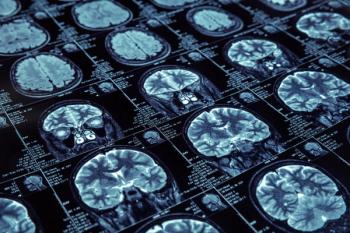
- December 2019
- Volume 85
- Issue 12
Get Up to Speed on UTIs
Pharmacists should familiarize themselves with the risk factors, symptoms, and treatments of these bacterial infections
Urinary tract infections (UTIs) are common bacterial infections that affect about 150 million people globally every year.1,2 The societal costs, including those associated with health care and time off from work, are about $3.5 billion annually in the United States alone.
UTIs can occur in anyone, but the highest incidence is among infant boys, older men, and women of any age.2 Women have a shorter urethra than men do, so bacteria can more easily be introduced to the bladder.3 UTIs in men are often the result of an enlarged prostate backing up the flow of urine, thereby allowing more bacteria to grow.
Serious sequelae from UTIs can include multiple recurrences, renal damage in children, pyelonephritis with sepsis, preterm birth, and complications caused by repeated antimicrobial use, such as antibiotic resistance and Clostridioides difficile colitis.2
Clinically, these infections are categorized as either complicated or uncomplicated UTIs. Complicated UTIs are associated with factors that negatively affect the urinary tract or the health of the patient. Some of these include foreign objects such as calculi, indwelling catheters, and other drainage devices; immunosuppression; pregnancy; renal failure or transplant; and urinary obstruction or retention.2 Complicated UTIs are also predominantly caused by Escherichia coli. Other pathogens include Candida spp, Enterococcus spp, Klebsiella pneumoniae, Proteus mirabilis, Pseudomonas aeruginosa, and Staphylococcus aureus. 2
Uncomplicated UTIs usually affect healthy patients who have no neurological or structural urinary tract problems. They are also differentiated into lower UTI (cystitis) and upper UTI (pyelonephritis).2 Uncomplicated UTIs are predominantly caused by E coli; however, other pathogens can include K pneumoniae, Staphylococcus saprophyticus, Enterococcus faecalis, group B Streptococcus, P mirabilis, P aeruginosa, S aureus, and Candida spp.2
Risk Factors
The risk of developing a UTI increases in individuals with certain comorbidities, patients using certain medical devices, and in women as they age. Many health issues increase the risk for developing a UTI. These include diabetes, enlarged prostate, kidney stones, menopause, para- or quadriplegia, pregnancy, prior kidney transplant, sickle cell disease, vesicoureteral reflux (when urine flows backward from the bladder), and weak immune systems.4
Medical devices can also increase the risk of UTIs. Use of a diaphragm for contraception, indwelling catheters, and spermicide on a condom can contribute to the risk of a UTI.4 Women are more at risk for UTIs because their urethras are smaller than men’s and their anuses are in close proximity to their vaginas. The risk also increases after menopause in women and after age 50 in men.4
Signs and Symptoms
A burning sensation upon urination is a common symptom of UTI. Patients may also feel an urgent need to urinate, even though little urine comes out. Signs of a more intense infection may include chills or fever; cloudy, dark, strange-smelling urine; a feeling of shakiness or fatigue; and pain or pressure in the back or the lower abdomen.5
Diagnosis
Diagnosing a UTI is pretty straightforward. Physicians perform a physical exam and ask for a urine sample. The sample is tested immediately for bacteria and red and white blood cells. Patients with a confirmed UTI are then started on empiric therapy.
A culture of the urine is then sent to the lab to determine which bacteria are causing the problem. This is a necessary step to determine the correct antibiotic for use. If the original empiric therapy does not appropriately treat the bacteria grown in the lab, the physician may change the medication to a different antibiotic. For patients with frequent infections, the physician may order a computed tomography scan, magnetic resonance imaging, or ultrasound to determine whether an abnormality exists in the urinary tract.
Treatment
Treatment varies with age and pregnancy status. However, it is pretty similar in most nonpregnant patients. For uncomplicated cystitis in nonpregnant patients, first-line therapy includes:
- Fosfomycin, 3 g by mouth, as a single dose, with 3 to 4 oz of water
- Nitrofurantoin monohydrate/macrocrystals, 100 mg by mouth, twice daily for 5 to 7 days
- Nitrofurantoin macrocrystals, 50 to 100 mg by mouth, 4 times daily for 7 days
- Trimethoprim/sulfamethoxazole, 160 mg/800 mg, 1 tablet by mouth, twice daily for 3 days Use when bacterial resistance is <20% and patient has no allergy. Avoid in elderly patients, as it runs the risk of affecting renal function.
Second-line therapy includes:
- Ciprofloxacin extended release, 500 mg by mouth, once daily for 3 days
- Ciprofloxacin, 250 mg by mouth, twice daily for 3 days
- Levofloxacin, 250 mg by mouth, every 24 hours for 3 days
- Ofloxacin, 200 mg by mouth, every 12 hours for 3 days
Alternative therapy includes:
- Amoxicillin/clavulanate, 250 mg/125 mg by mouth, 3 times daily for 3 to 7 days
- Amoxicillin/clavulanate, 500 mg/125 mg by mouth, twice daily for 3 to 7 days
- Cefaclor, 500 mg by mouth, 3 times daily for 7 days
- Cefdinir, 300 mg by mouth, twice daily for 7 days
- Cefpodoxime, 100 mg by mouth, twice daily for 7 days
- Cefuroxime, 250 mg by mouth, twice daily for 7 to 10 days
For complicated cystitis in nonpregnant patients, first-line therapy includes:
Oral:
- Ciprofloxacin, extended release, 1000 mg by mouth, once daily for 7 to 14 days
- Ciprofloxacin, 500 mg by mouth, twice daily for 7 to 14 days
- Levofloxacin, 750 mg by mouth, once daily for 5 days Parenteral:
- Ampicillin, 1 to 2 g intravenously, every 6 hours, plus gentamicin 2 mg/kg per dose, every 8 hours for 7 to 14 days
- Ciprofloxacin, 400 mg intravenously, every 12 hours for 7 to 14 days
- Doripenem, 500 mg intravenously, every 8 hours for 10 days
- Imipenem/cilastatin, 500 mg intravenously, every 6 hours for 7 to 14 days
- Levofloxacin, 750 mg intravenously, once daily for 5 days
- Meropenem, 1000 mg intravenously, every 8 hours for 7 to 14 days
- Piperacillin/tazobactam, 3.375 g intravenously, every 6 hours for 7 to 14 days
Second-line therapy includes:
- Cefepime, 2 g intravenously, every 12 hours for 10 days
- Ceftazidime, 500 mg intravenously or intramuscularly, every 8 to 12 hours for 7 to 14 days
Newer antibiotics to treat complicated UTIs include ceftazidime/ avibactam, ceftolozane/tazobactam, meropenem/vaborbactam, and plazomicin.
Pain associated with UTIs can be significant. Treatment includes phenazopyridine, which is available over the counter or as a prescription. This medication treats the painful symptoms of a UTI but will not cure it. Caution patients that phenazopyridine will likely darken the urine to a brown or orange color. This may lead to staining of the underwear. It will also stain contact lenses. Therefore, patients should not wear their contact lenses during treatment with this drug.
Home Remedies
Along with standard therapy, patients may find relief sooner and/or reduce the risk of recurrent infections by trying a few simple home remedies. Cranberries reportedly contain a tannin that prevents E coli from attaching itself to the walls of the urinary tract.5 Caution patients not to use cranberry juice cocktail. The correct products for this use are cranberry supplements, dried cranberries, and unsweetened cranberry juice.3 Drinking copious amounts of water helps flush harmful bacteria from the urinary tract. This includes any liquids, but water is the most beneficial.3 And patients should always use the bathroom when needed. Holding in urine can allow bacteria to flourish in the urinary tract.3
Finally, vitamin C strengthens the immune system and can acidify urine to prevent infection.3
Articles in this issue
almost 6 years ago
Individualizing COPD Treatment to Improve Adherence and Overall Outcomesalmost 6 years ago
2019 Was a Year for Advancements in Infectious Diseasealmost 6 years ago
OTC Case Studies: Feveralmost 6 years ago
Generic Products (December 2019)almost 6 years ago
Can You Read these Rxs? (December 2019)almost 6 years ago
Pet Peeves (December 2019)almost 6 years ago
Case Studies (December 2019)almost 6 years ago
Aimovig Can Cut the Number of Migraine DaysNewsletter
Stay informed on drug updates, treatment guidelines, and pharmacy practice trends—subscribe to Pharmacy Times for weekly clinical insights.



















































































































































































































